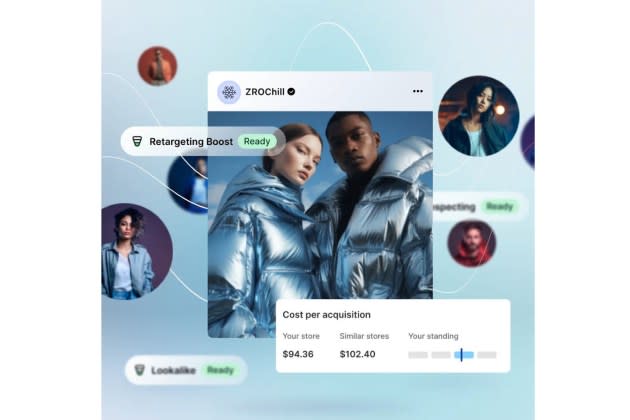Shopify’s Big Reveal: 100-plus Innovations and Upgrades

Shopify has released more than 100 new features and updates to its platform geared to help merchants grow and connect better with shoppers.
Among the features included in Shopify’s winter 2024 edition unveiled Wednesday, the “Semantic Search,” “POS Ship From Store” and “Line of Credit.”
More from WWD
“Every year, we build hundreds of features and it can be hard for merchants to keep up with all of them. That’s why every six months, we launch an ‘edition,’ so they can learn everything they need to know about what we’re building for them,” Emma Horner, Shopify’s director of product marketing, explained via an email exchange with WWD.
According to Shopify execs, the Semantic Search automatically goes beyond the key words shoppers plug into the search feature, interpreting the context behind customers’ query to return relevant results and giving them the freedom to search in everyday natural language to find the products they’re looking for faster.
The new POS ship from store enables store staff using Shopify’s point-of-sale system to view online orders and get them picked, packed and shipped directly from retail locations, in effect turning stores into part of the company’s warehouse and fulfillment network. The feature is geared to increase efficiency, reduce warehouse load, and lower shipping costs.
There is also an advanced Shopify checkout, which streamlines the checkout process to one page from three, and cuts the checkout time by four seconds, Shopify indicated.
Horner said the 100-plus upgrades and new releases are “critical to our merchants’ success…helping them convert more customers, expand to more channels, streamline operations, reach more audiences, leverage world-class commerce tools, and help developers build and add powerful functionality to merchant and customer experiences.
“We did a ton of work to better support the products our merchants sell, and to turn more shoppers into buyers,” Horner added. “We’ve increased variant limits from 100 to 2,000 via APIs (applications program interface) that are currently in developer preview; this supports merchants with large or complex product catalogs, and enables them to be more ambitious about the way they think about product development, e.g., expanding colorways, sizing or other sku [stock keeping unit] options. We’ve built a better product categorization model that improves the way products are created and classified in Shopify. We’ve also introduced a free subscription app, allowing merchants to set up and manage subscriptions directly from their Shopify admin, which allows merchants to easily experiment with the subscriptions to see if it’s right for their business.”
An updated feature is Audiences 2.2, which is geared to help Shopify Plus merchants cut customer acquisition costs, get ads in front of likely buyers, and find more customers on top ad platforms. Audiences 2.2 is powered by millions of commerce insights, Shopify indicated. Shopify Audiences launched in 2022 and since then, algorithm enhancements were steadily rolled out. Shopify’s latest version of Audiences, said Horner, “delivers richer insights and connects to more ad platforms, which now includes Meta, Google, Pinterest, Snap, Criteo and TikTok.”
“We’ve also added additional benchmarking functionality,” said Horner. “Our benchmarking feature launched in September 2023 and allows merchants to compare the performance of their campaigns to merchants like them. With this latest release, merchants can now explore ad performance trends with historical data to separate seasonal results from their campaign performance. Merchants can now also compare their ad performance to industry groupings of their choice — to pinpoint where to make improvements.” If a Shopify merchant sells custom-made T-shirts, the merchant can compare a campaign performance to similar merchants, not just any apparel retailer.
“If that same T-shirt seller also sells makeup, they can take a look at the health and beauty category grouping for that part of their business.”
On the financial side, the Shopify Capital unit, which has funded more than $5 billion in capital since launching in 2017, for the first time is offering term loans with customizable loans and payment schedules.
Additionally, Shopify has a new line of credit offering that charges interest only on the amount withdrawn, not the total financing approved, and without any origination, draw or hidden fees. Automated payments over six months and options to pay off early are offered. “Merchants can request funds at any time, increase capital as they grow without any limitations on draws, replenish as they repay, and only pay interest on what they use,” Shopify indicated in a statement.
Best of WWD

